Microgreen seeds vs regular seeds, As more Indian households explore fresh, homegrown food options, microgreens have gained popularity as a nutrient-rich, quick-to-grow option. Understanding the difference between microgreen seeds and regular seeds is essential for anyone keen on indoor gardening, kitchen farming, or boosting their diet with nutrient-dense greens. This guide explores the unique aspects of microgreen seeds versus regular seeds, especially in the Indian context, providing insights into their types, benefits, growing techniques, and potential uses.
1. Understanding Microgreens: What Makes Them Different?
Microgreens are young, edible seedlings of vegetables and herbs, typically harvested at the first true leaf stage, which is about 7-21 days after germination. They are small but pack intense flavors and are rich in vitamins, minerals, and antioxidants. Due to their size, they require minimal space, soil, and sunlight, making them an ideal choice for urban Indian homes, especially those with limited garden space.
Regular seeds, on the other hand, refer to seeds used to grow full-sized plants, such as mature vegetables, herbs, or grains. They follow a longer growing cycle, requiring weeks to months to reach harvest maturity.
2. Microgreen Seeds vs. Regular Seeds: Key Differences
- Purpose of Use:
- microgreen seeds in India: Specially chosen for growing young plants quickly for immediate consumption. They are high in nutrients, which is why they’re harvested at an early stage.
- Regular Seeds: Intended for growing fully mature plants that bear vegetables, fruits, or herbs. These plants go through a full life cycle, including flowering and fruiting stages.
- Growth Cycle:
- Microgreens grow cycle: Microgreen seeds grow fast, usually ready within a week or two. They’re harvested early, typically when the first true leaves appear.
- Regular Seeds: These seeds require a longer growth period, often several weeks or even months, as they develop into mature plants.
- Seed Selection and Quality:
- Microgreen Seeds: Typically untreated and specially selected for microgreen production. They are grown without chemical treatments to ensure they’re safe for consumption at a young age.
- Regular Seeds: Often treated with pesticides or fungicides to protect young plants during longer growth cycles. These treatments may not be ideal if consuming plants early as microgreens.
- Nutrient Density:
- Microgreens Nutrient Density: Known to be nutrient-dense, containing higher concentrations of vitamins C, E, and K, as well as beta-carotene, than their mature counterparts.
- Regular Plants: While mature plants are nutritious, they may not match the intense nutrient density found in young microgreens.
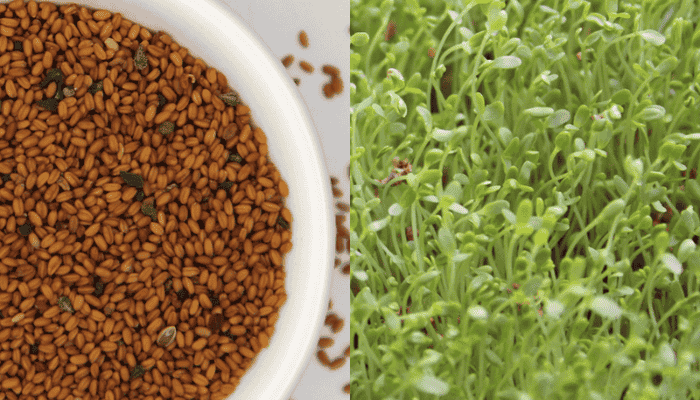
3. Types of Seeds Suitable for Microgreens in India
India’s diverse climate allows for a wide variety of seeds suitable for microgreen cultivation, and many Indian households already have access to these through regular grocery shopping. Here are popular options:
- Fenugreek (Methi): One of the most common microgreens in India, fenugreek is packed with vitamins A, C, and K. It has a mild, nutty flavor and is often used in salads or as a garnish.
- Mustard: Known for its peppery flavor, mustard microgreens add zest to dishes. High in antioxidants, they are ideal for cardiovascular and immune health.
- Coriander (Dhaniya): A staple in Indian cuisine, coriander microgreens offer a milder flavor than mature leaves and are rich in essential oils, which have antibacterial properties.
- Amaranth: With vibrant red and purple colors, amaranth microgreens are visually appealing and rich in iron and other minerals.
- Basil: Basil microgreens have a strong, sweet flavor and contain compounds beneficial for reducing inflammation.
- Spinach: Spinach microgreens are easy to grow and packed with iron, making them an excellent addition for those looking to boost nutrient intake.
Each of these can be grown as either microgreens or full plants, though when grown as microgreens, they offer an intense nutrient punch and fresh flavor. Click here to buy fenugreek seeds online, Coriander, Amaranth, Spinach plant seeds.
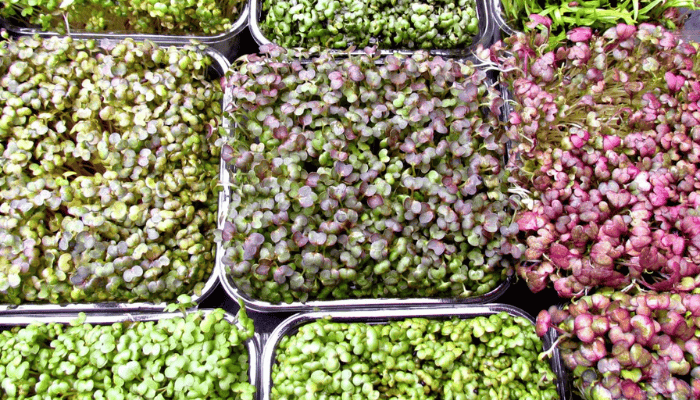
4. How to grow microgreens at home vs. Full-Sized Plants
Growing Microgreens:
Microgreens require minimal equipment—just a shallow tray, soil or a suitable growing medium (like coco peat), and indirect sunlight. Here’s a quick step-by-step:
- Soak the Seeds (optional for larger seeds): Larger seeds like peas or beans benefit from a 6-12 hour soak to speed up germination.
- Spread the Seeds: Scatter the seeds evenly on a shallow tray filled with a thin layer of soil or coco peat.
- Lightly Cover: Cover the seeds with a very light layer of soil.
- Water and Place: Mist the seeds and place the tray in indirect sunlight or under a grow light.
- Harvest: In about 7-14 days, once the microgreens reach about 5 cm in height, they’re ready for harvest.
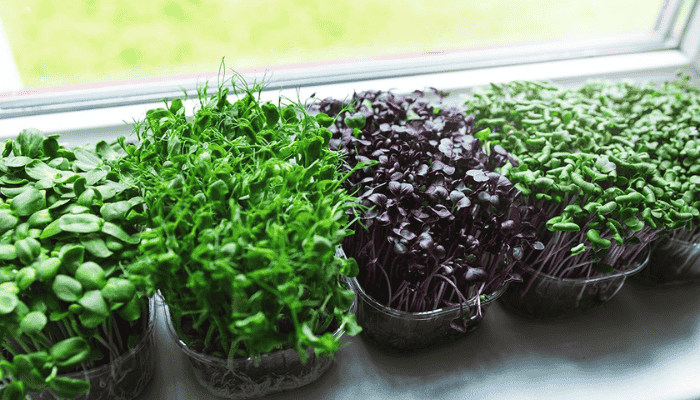
Growing Regular Plants:
- Sow the Seeds: Plant the seeds in pots or directly in soil, ensuring they are at the appropriate depth (varies by species).
- Nurture the Seedlings: Regular seeds need more water, sunlight, and nutrients over time to reach maturity.
- Transplant (if needed): Some plants require repotting as they grow.
- Regular Care: Full-sized plants demand regular pruning, watering, and pest management.
- Harvest Mature Plant: Depending on the crop, harvesting could be weeks to months away.

5. Cost Considerations
In India, microgreen seeds may be slightly more expensive than regular seeds due to their organic and untreated nature. However, since microgreens grow fast, they require fewer inputs over time, making them cost-effective for consistent, fresh produce. Regular seeds are generally cheaper and widely available, making them a more affordable option for long-term gardening but requiring more resources, like fertilizers and pesticides, for full plant growth.
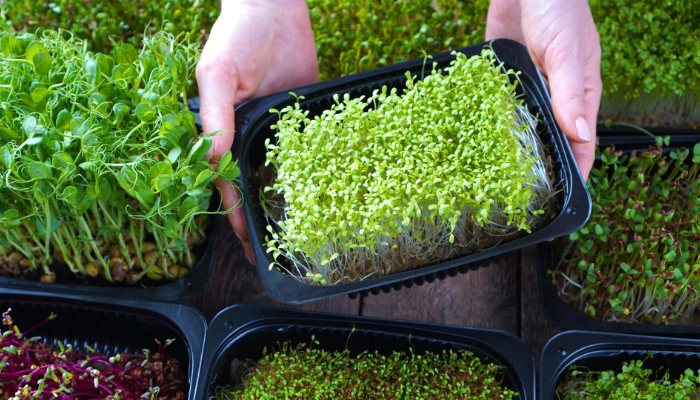
6. Health and Environmental Benefits
Microgreens provide a rich nutrient source and are ideal for urban settings, where people may lack space or soil for traditional gardening. They’re grown without the need for chemical fertilizers or pesticides, contributing to a healthier home environment and a smaller ecological footprint.
Regular Plants grown for mature vegetables and fruits offer sustained yield over time and contribute to food security. However, they require more resources and space, which may not always be feasible in small urban settings.
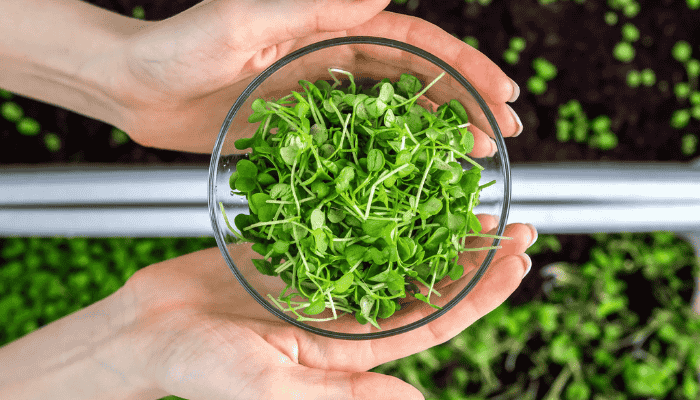
7. Choosing Between Microgreen and Regular Seeds in India
For the Indian gardener, the choice between microgreen and regular seeds can depend on several factors:
- Space Availability: If space is limited, microgreens are an excellent choice. They grow in trays, on balconies, or even indoors with minimal sunlight.
- Nutritional Needs: For those looking to boost their daily nutrient intake quickly, microgreens are perfect. They can be grown continuously and offer fresh greens every week.
- Time Commitment: Microgreens are low-maintenance, needing minimal attention and growing in a short time. Regular plants require more care and patience.
- Cost Efficiency: Growing microgreens continuously may seem costly, but they’re quick to yield. Regular plants, while requiring a one-time investment, may yield more in the long run, especially for vegetables like tomatoes, capsicum, or brinjals.

Conclusion
Microgreen seeds and regular seeds each bring unique benefits for Indian gardeners. Microgreens offer quick, nutrient-packed harvests that suit the urban lifestyle and limited space. Regular seeds, on the other hand, are essential for cultivating mature plants, contributing to a more traditional form of self-sustenance. As awareness of health, nutrition, and sustainable gardening grows in India, both options provide distinct advantages. For those new to gardening, microgreens offer a low-risk introduction, while regular seeds are ideal for those ready to commit to a longer, more involved gardening experience.


